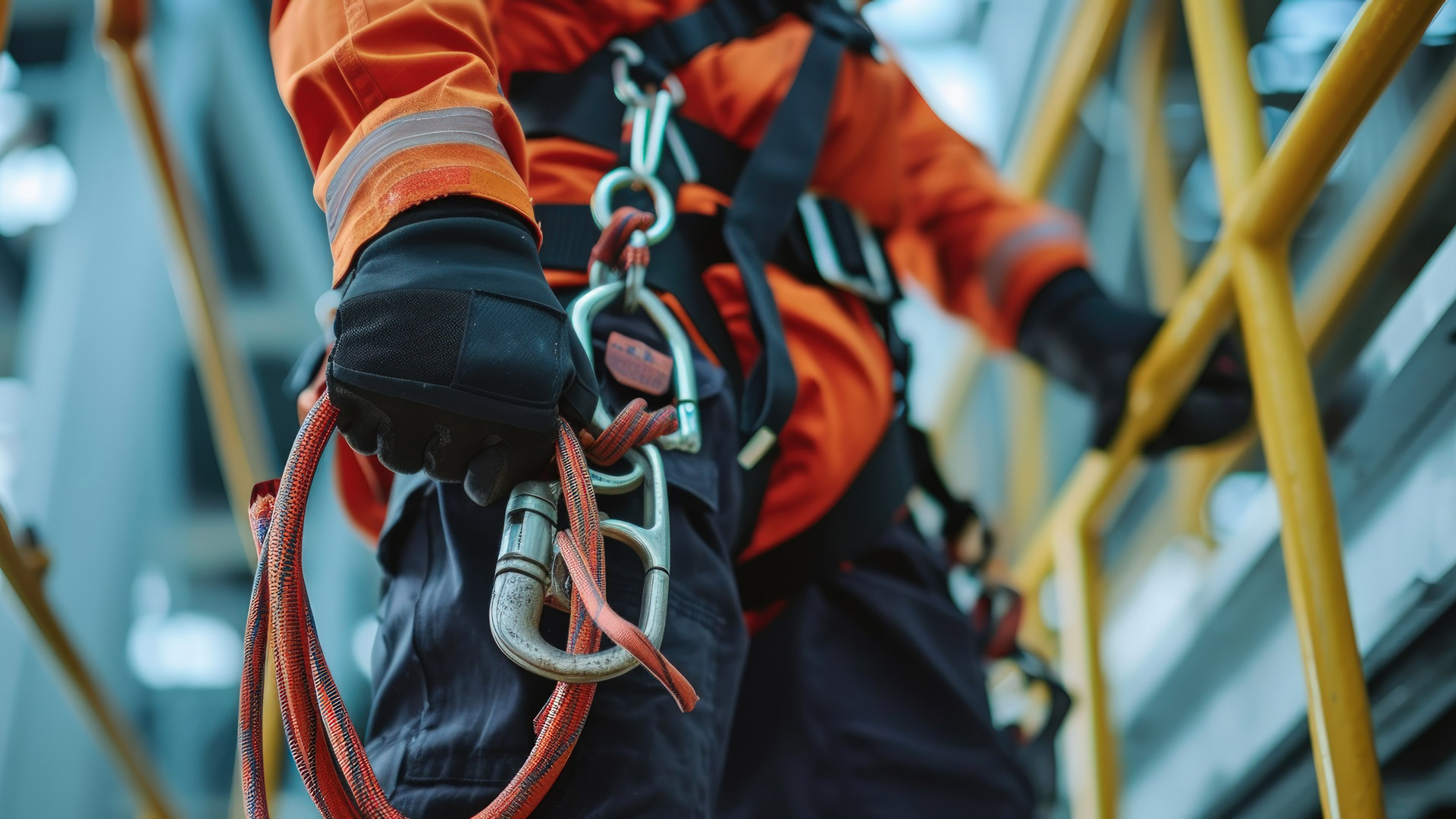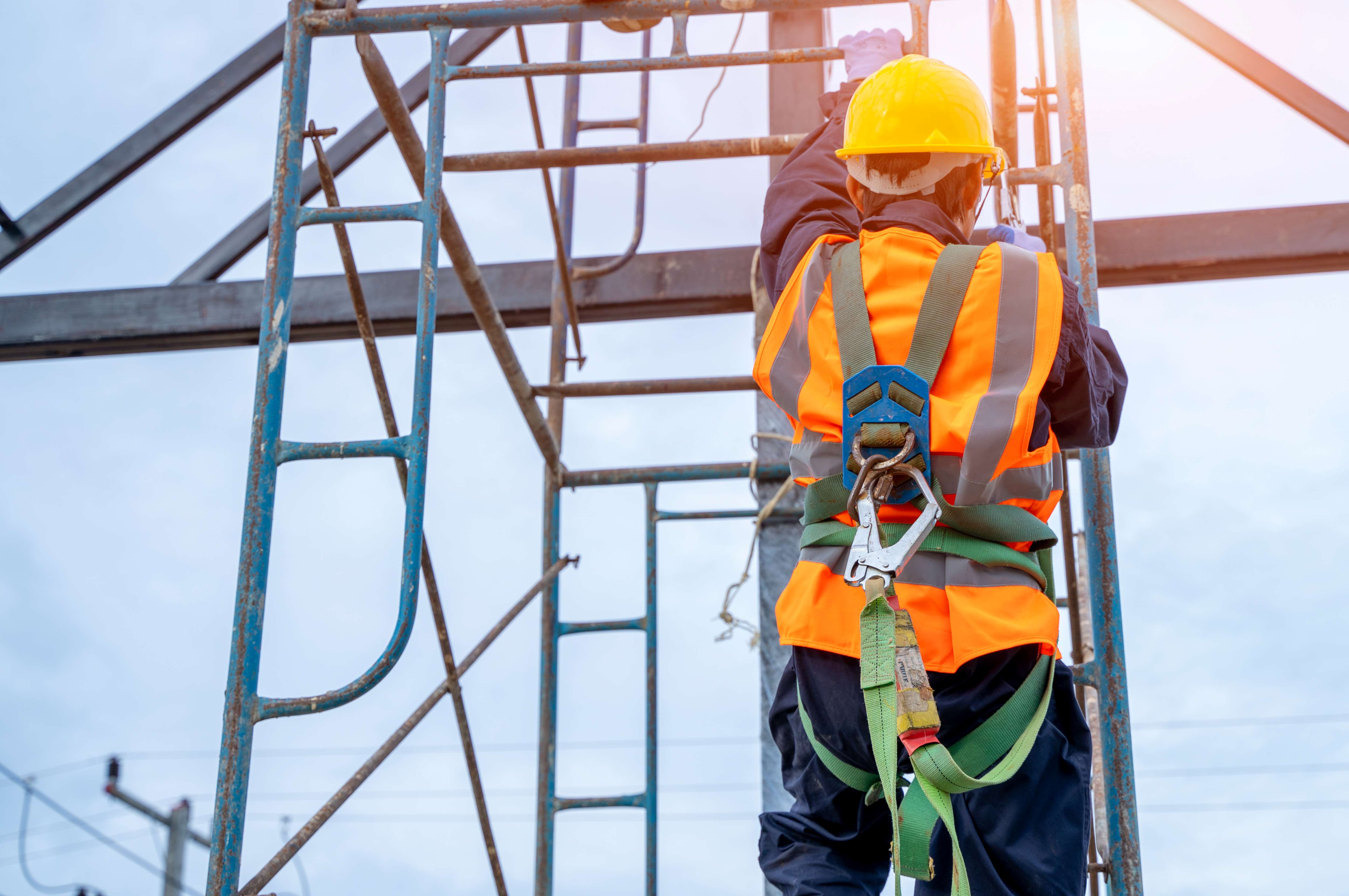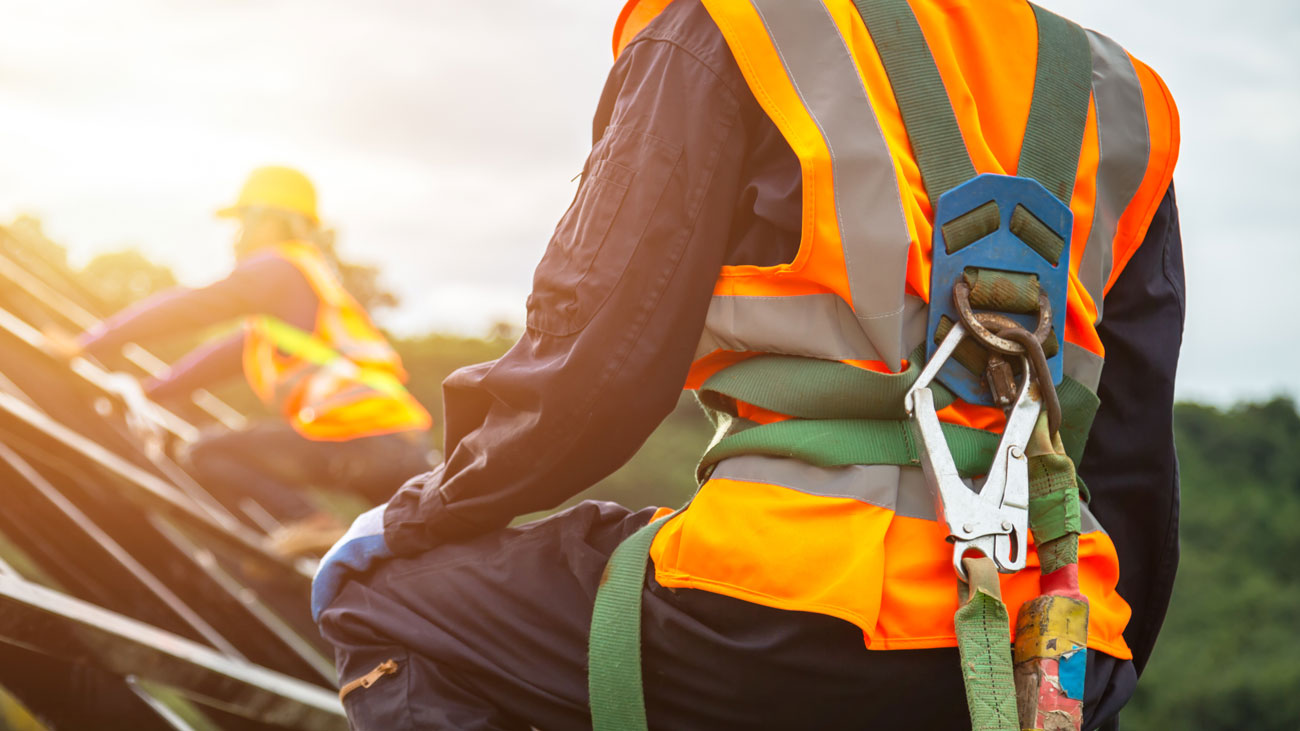RISK
NEWS
HSE highlights importance of work at height hierarchy after worker left paralysed
29 Jul 2024
A Cheshire-based electrical transmission company has been fined £240,000 after a man was left paralysed from the chest down after a fall at work.
Gavin Pugh was employed as a linesman by Wood Transmission and Distribution Limited. He had been demolishing and replacing electricity pylons in East Staffordshire when he fell more than 30 feet on 6 April 2022.
Mr Pugh unknowingly attached his fall protection lanyard to a diagonal steel section that was only securely bolted in place at its uppermost fixing. As he moved around the tower, the steel section he was attached to dropped into a vertical position, causing his lanyard to fall loose, resulting in him falling to the ground.
An investigation by the HSE found that Wood Transmission and Distribution Limited failed to ensure that the work at height was properly planned, appropriately supervised, and carried out in a manner that was, so far as was reasonably practicable, safe. The company had not considered the work at height hierarchy as part of its planning.
The work at height hierarchy is a structured approach that prioritises safety measures to ensure that work at height is conducted as safely as possible. This article explores the importance of the work at height hierarchy and identifies who should implement it.
The significance of the work at height hierarchy
The work at height hierarchy is essential for several reasons:
- Risk reduction: The primary goal of the hierarchy is to minimise the risk of falls from height. By following a structured approach, employers can systematically eliminate or reduce the hazards associated with working at height, thus protecting workers from potential harm.
- Legal compliance: Adhering to the work at height hierarchy is a legal requirement in the UK. The Work at Height Regulations 2005 mandate that employers and those in control of work at height activities must follow a prescribed hierarchy of control measures. Non-compliance can result in severe penalties, including fines and prosecution.
- Prevention of accidents and fatalities: Falls from height are one of the most common causes of workplace fatalities and serious injuries. Implementing the hierarchy helps in significantly lowering the incidence of such accidents, creating a safer work environment.
- Economic benefits: Reducing workplace accidents translates into fewer sick leaves, lower insurance premiums, and less time lost due to injuries. This, in turn, leads to higher productivity and economic benefits for businesses.
- Promoting a safety culture: By prioritising safety through the hierarchy, organisations foster a culture of safety and responsibility. This not only boosts employee morale but also enhances the overall reputation of the company as a safe place to work.
The work at height hierarchy explained
The hierarchy comprises several levels, each aimed at reducing the risk associated with working at height:
- Avoid work at height: The most effective way to prevent falls is to eliminate the need to work at height. This can be achieved by using long-handled tools or relocating tasks to ground level.
- Prevent falls: When working at height is unavoidable, the next step is to use equipment that prevents falls. This includes guardrails, scaffolding, and mobile elevated work platforms (MEWPs).
- Minimise the distance and consequences of a fall: If the risk of falling cannot be completely prevented, measures should be taken to reduce the distance and impact of a fall. This can involve using personal fall protection systems, such as harnesses and lanyards, as well as fall arrest systems.
- Administrative controls: Administrative controls involve implementing procedures and training to enhance safety. This includes worker training, supervision, and scheduling work during favourable conditions.
- Personal Protective Equipment (PPE): As a last resort, appropriate PPE such as helmets, harnesses, and safety boots should be provided to workers when other measures do not fully mitigate the risks.
Who should use the work at height hierarchy?
The work at height hierarchy is relevant to a wide range of stakeholders, including:
- Employers: Employers have a legal and moral obligation to ensure the safety of their employees. They must assess the risks and implement the hierarchy to protect workers from falls.
- Site managers and supervisors: Those responsible for overseeing work at height must ensure that safety measures are in place and that the hierarchy is followed. This includes conducting risk assessments and supervising work activities.
- Employees: Workers themselves play a crucial role in adhering to safety protocols. They should be trained on the hierarchy and understand the importance of following the prescribed measures.
- Safety officers and inspectors: Safety professionals are tasked with monitoring and enforcing compliance with safety regulations. They should ensure that the work at height hierarchy is implemented and maintained.
- Contractors and subcontractors: Those who engage in contract work at height must also comply with the hierarchy. This ensures that all parties involved in the work are protected and that safety standards are consistently applied.
Conclusion
The work at height hierarchy is a vital framework for ensuring safety in workplaces across the UK. By systematically addressing the risks associated with working at height, the hierarchy helps prevent accidents, injuries, and fatalities. It is the responsibility of employers, site managers, employees, safety officers, and contractors to implement and adhere to this hierarchy, creating safer work environments for everyone involved. Compliance not only fulfils legal obligations but also promotes a culture of safety and efficiency in the workplace.
You might also be interested in
RELATED CONTENT
RELATED COURSES

The Working at height course helps learners understand the dangers associated with working at height and ways to control the risks

The Risk Assessment and Method Statement (RAMS) course examines the HSE’s recognised five-step approach to risk assessment.

The world’s best-known health and safety certificate, designed for managers and supervisors in any sector or organisation.

IOSH Working Safely is a one-day introductory health and safety training course for people at any level, in any sector.

Work at height continues to be the most common cause of fatal injury, according to the HSE’s latest statistics, published on 6 July.

Solar panel company Blue Sun Energy Limited has been sentenced for safety breaches after a self-employed labourer fell through a rooflight.

Working at height remains one of the biggest causes of fatalities and major injuries. Common cases include falls from ladders and through fragile surf...

The Access Industry Forum (AIF), the forum that represents the principal work at height trade associations and federations, is calling for clearer rep...